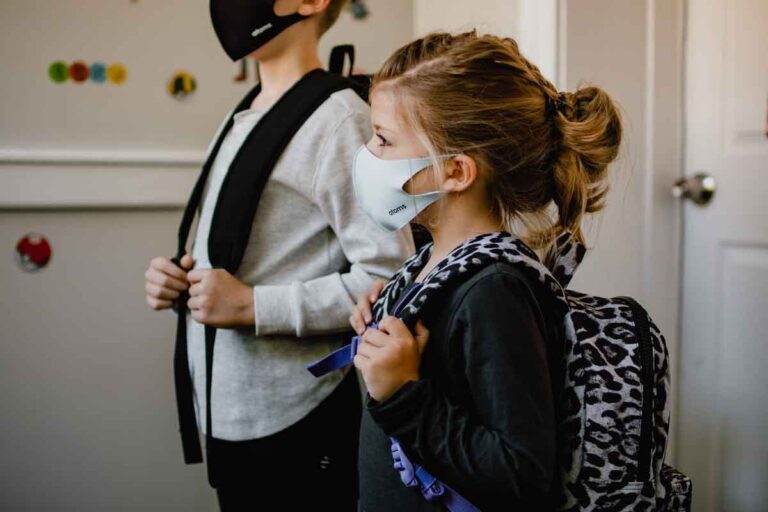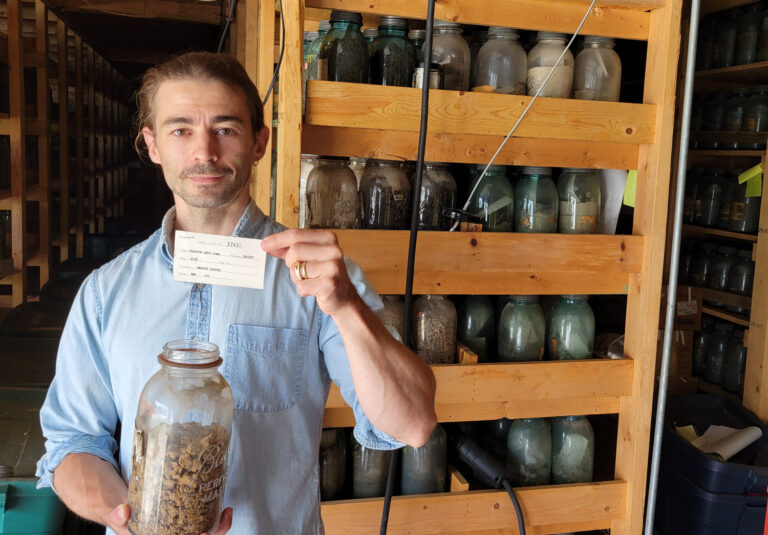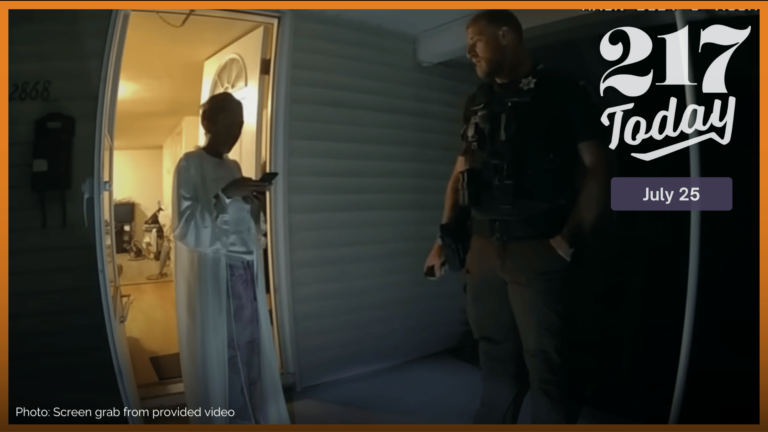URBANA – With COVID-19 cases once again surging — and with the new CDC guidance for mask-wearing announced days ago — how might life change for people in east-central Illinois?
The guidance once again calls for universal mask-wearing in indoor public spaces in areas where COVID is surging — defined as having “substantial or high transmission” of the coronavirus.
The CDC has a map that classifies every county as having a low, moderate, substantial or high rate of transmission. Champaign County is currently seeing “substantial” transmission.
The agency also calls on all K-12 schools to implement universal mask-wearing, nationwide. The Illinois Department of Public Health says it will align fully with the new guidance.
The concern is that rare breakthrough infections can occur among vaccinated people. And new data suggests that vaccinated people who get infected with the more contagious delta variant can transmit it to others — unlike what was seen with earlier variants.
Illinois Newsroom spoke with local health officials — Julie Pryde and Awais Vaid, administrator and deputy administrator, respectively, with the Champaign-Urbana Public Health District — to learn what the news means for area residents.
Here are some highlights from the conversation:
Local COVID data shows the vaccines are working
Vaid says most cases of COVID-19 are occurring among unvaccinated people, following national trends. And the few breakthrough infections that have occurred among vaccinated people in Champaign County have not been serious.
“Those have been very mild or asymptomatic, not requiring hospitalization at all,” Vaid says. That’s a sign the vaccine is working.
The number of new cases and hospitalizations in the county have about doubled over the past couple weeks, he says. And the COVID-19 test positivity rate has risen to about 5% — up from about 1% this time last month.
What’s most concerning is that a lot of the clusters or outbreaks are happening in long-term care facilities and nursing homes, Vaid says. It’s why he and Pryde would like to see everyone who’s not vaccinated get the vaccine — especially those who live or work with elderly people who may be less protected by the vaccine.
Currently about half of all Champaign County residents are fully vaccinated.
It will be up to businesses to re-implement mask requirements
There is no longer a mask mandate — at the state or local level — so each business owner will have to decide whether to implement the new CDC mask guidelines. C-U Public Health has posted to its website signs — asking everyone to mask up upon entry — that businesses can download.
“The different business groups have been really wonderful partners in this. So we are hoping that they will go ahead and put those up,” Pryde says.
Businesses have the right to protect their employees and customers, she says, which typically means following public health guidance.
“So we want to see that, and we don’t want to have to get to where we have to [ask the mayors to] do ordinances again,” Pryde says. “But we will if we see the numbers continue to rise.”
It will also be up to K-12 schools to implement mask guidance, barring state-level mandates
Pryde says federal, state and local health officials provide guidance to schools, and it’s ultimately up to the schools to apply that guidance in their COVID safety plans.
“It is their responsibility to make sure that they’re protecting those in their care,” Pryde says. If parents run into issues with schools not requiring or enforcing mask-wearing, they should bring it up with school officials, not the health department.
Local health districts lack the authority to enforce public health guidance, in the absence of a state mandate or executive order. Pryde says she has warned superintendents that if they fail to follow public health guidance, they may, however, run into issues with their insurers.
Getting as many community members vaccinated as possible will increase the chances of schools remaining open, to allow children to attend in person.
“We don’t want to get back in the position where we’re seeing massive outbreaks in the schools,” Pryde says. “It’s up to the adults in our community to get vaccinated to get the children in their care vaccinated.”
There are still incentives for getting vaccinated
When the CDC previously announced that vaccinated people could ditch their masks indoors, it was meant, in part, to serve as an incentive to get more people vaccinated: Get the vaccine and have more freedom.
With the new reversal in the mask-wearing guidance, Pryde says there are still incentives for people to get the vaccine: to avoid illness and death.
“To be blunt, the point is that they are not going to risk hospitalization, death and potential long-term disability by getting infected with COVID,” Pryde says. “And then possibly spreading it to someone else that they may end up killing or harming.”
She says there are many convenient options for people to get the vaccine — including walk-ins during weekday business hours at the C-U Public Health District.
“Just because you haven’t been vaccinated yet, it’s certainly not too late,” she says.
“Some people wanted to wait around and see how their friends or others did with vaccination. And so now’s the time to take advantage of all this free vaccination availability that we have in our county.”
Some advice for navigating life during this new COVID surge
Being vaccinated — and spending time with other people who are vaccinated — is not the biggest concern. The issue is that in indoor, public spaces where people are unmasked, there’s no way to know who’s vaccinated and who’s not.
For children who are too young to be vaccinated, “doing things outside is a lot safer than being inside,” Pryde says. “Kids can run around without masks outside.”
Vaid says wearing a mask serves as “an additional protection” for people who are vaccinated, especially with the more contagious delta variant spreading.
Requiring universal masking indoors will hopefully clamp down on the spread of the virus and allow businesses to stay open.
“Everything is open right now, and the only thing that we are asking right now, just because of this surge in the number of cases, is to go back to masking indoors,” Vaid says. “I don’t think that that’s a huge sacrifice for anybody. I mean, I think this is the least we can do.”
Masking up — and getting as many people vaccinated as possible — will hopefully prevent more stringent restrictions.
“If things start getting worse, then we may be in the same situation where we were last year, where the governor may have to come back and put back some of the mitigations that were relaxed,” Vaid says. “And we don’t want to be in that situation.”
This situation could have been prevented
If more people had gotten the vaccine when it became available to them, the COVID surge we’re currently experiencing could’ve been avoided, Vaid says.
“If we, as a country, would have been at 90% or 95% vaccination right now, we would not be having this discussion,” he says.
Pryde says it’s frustrating to her to see so many Americans refusing to take a vaccine that people in other parts of the world are literally dying to get their hands on.
“It’s really tragic. And it is heartbreaking,” she says.
Most of the 159 Champaign County residents that have died from COVID-19 so far died before the vaccines became available, Pryde says.
“Now that we have vaccines available, unfortunately, we’ve still been seeing deaths,” she says. “It’s preventable.”
More than 600,000 people in the U.S. — and more than 4 million people worldwide — have died from COVID-19.
“That is a staggering amount and why people cannot wrap their heads around that and understand how fortunate we are to have access to safe and effective vaccines — I don’t understand. I just don’t understand,” Pryde says.
Christine Herman is a reporter at Illinois Public Media. Follow her on Twitter: @CTHerman







